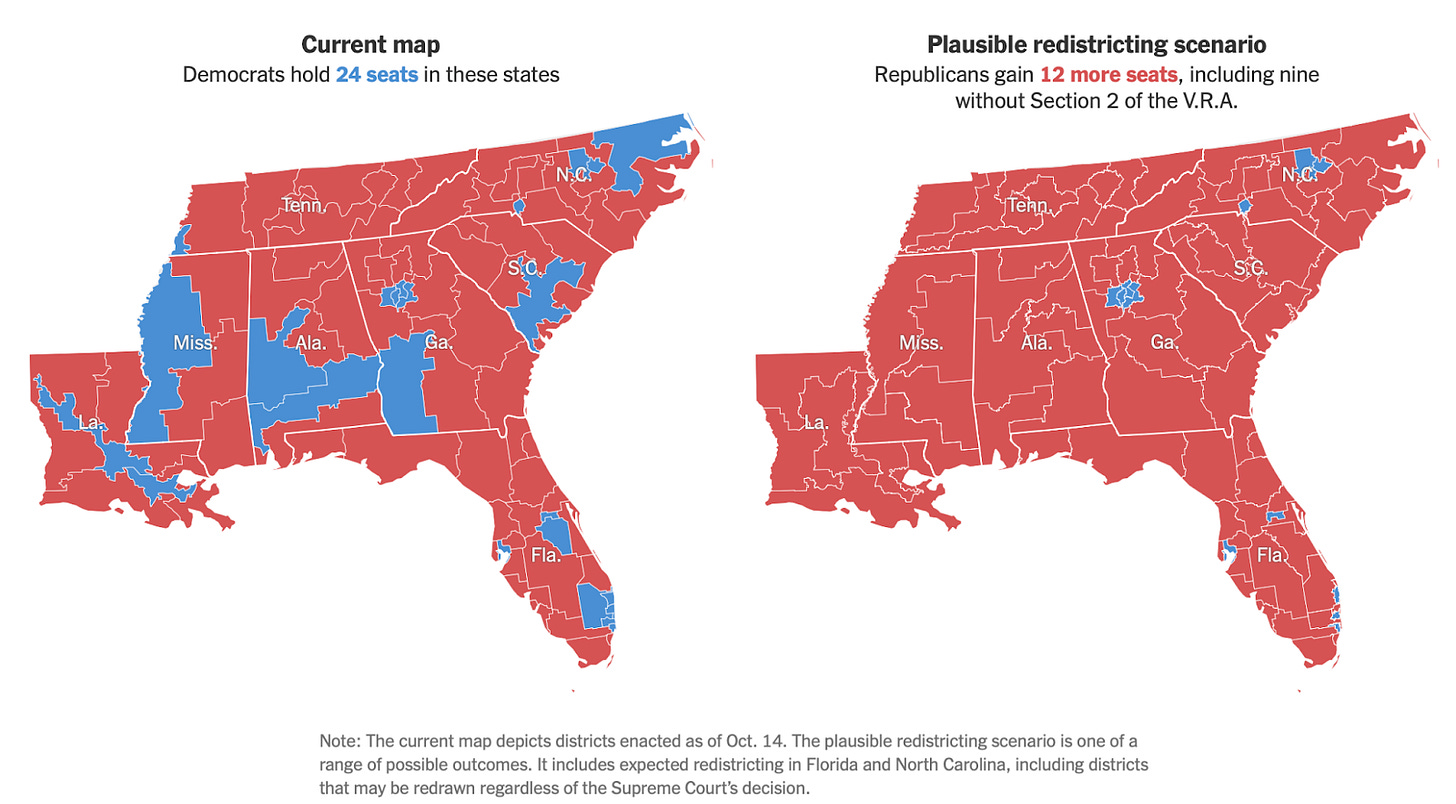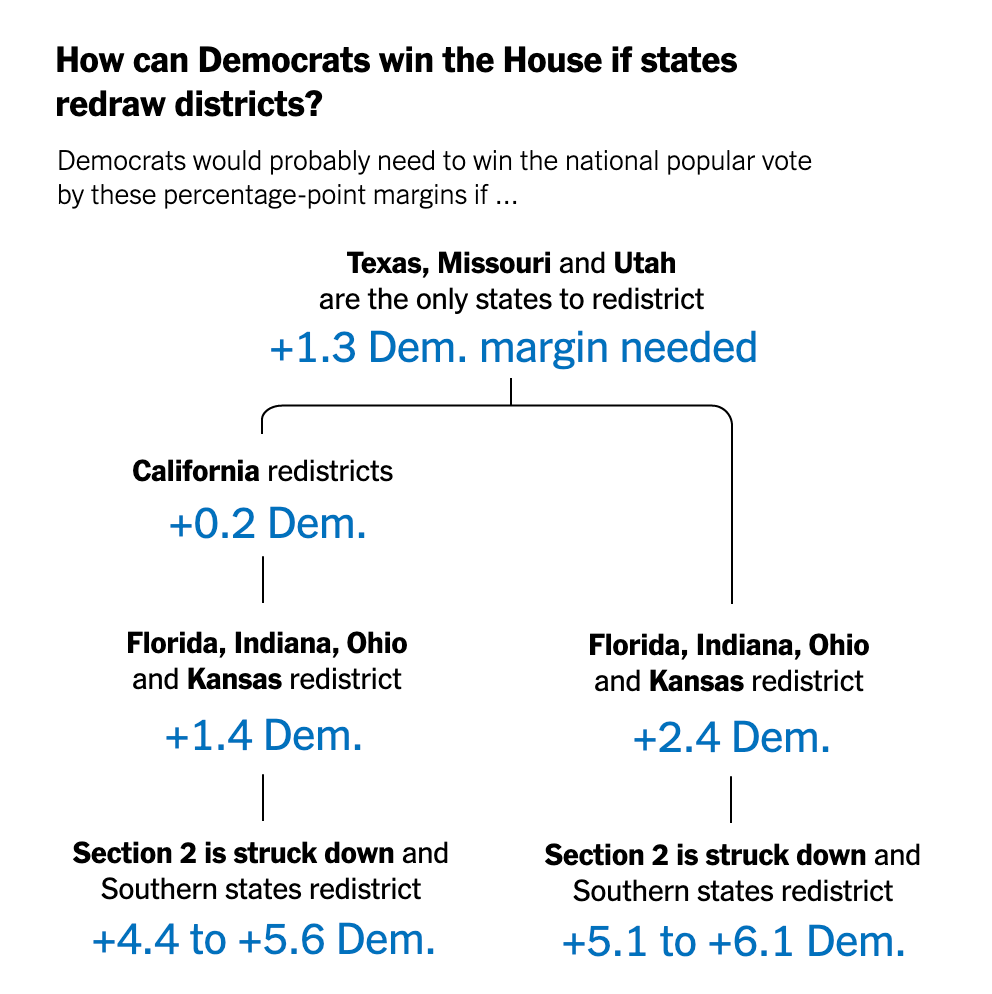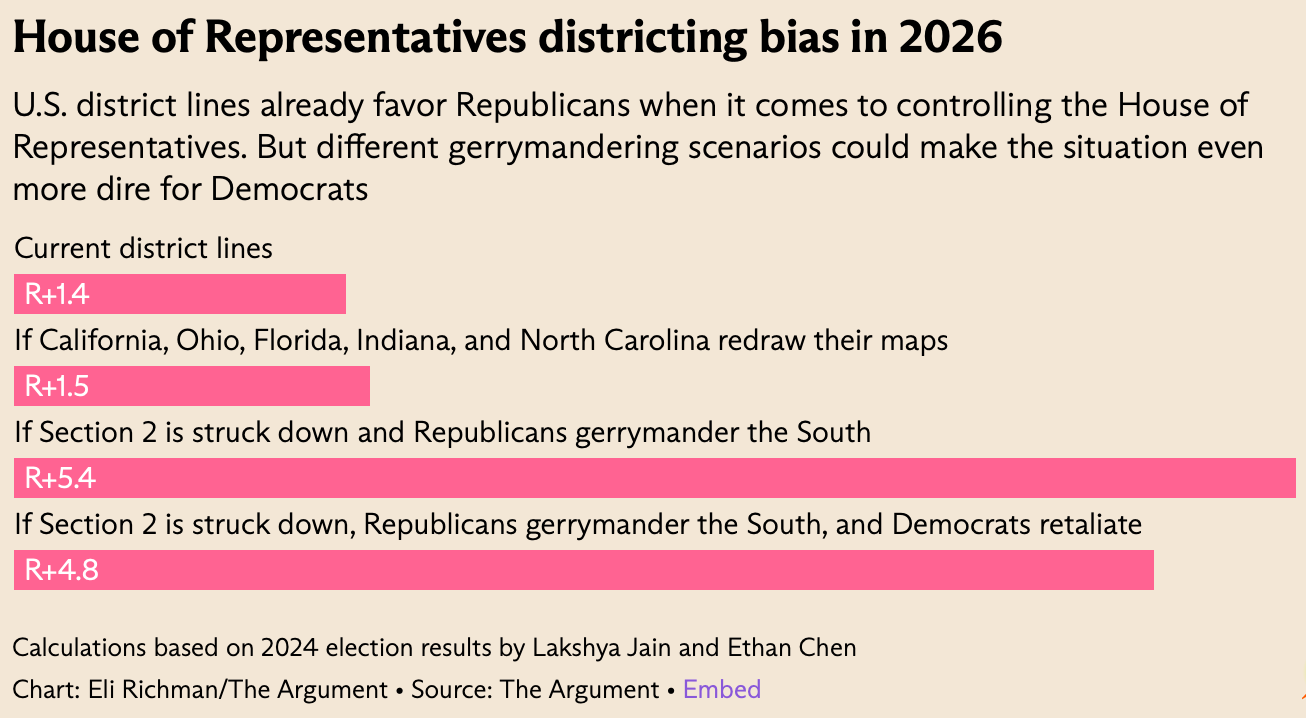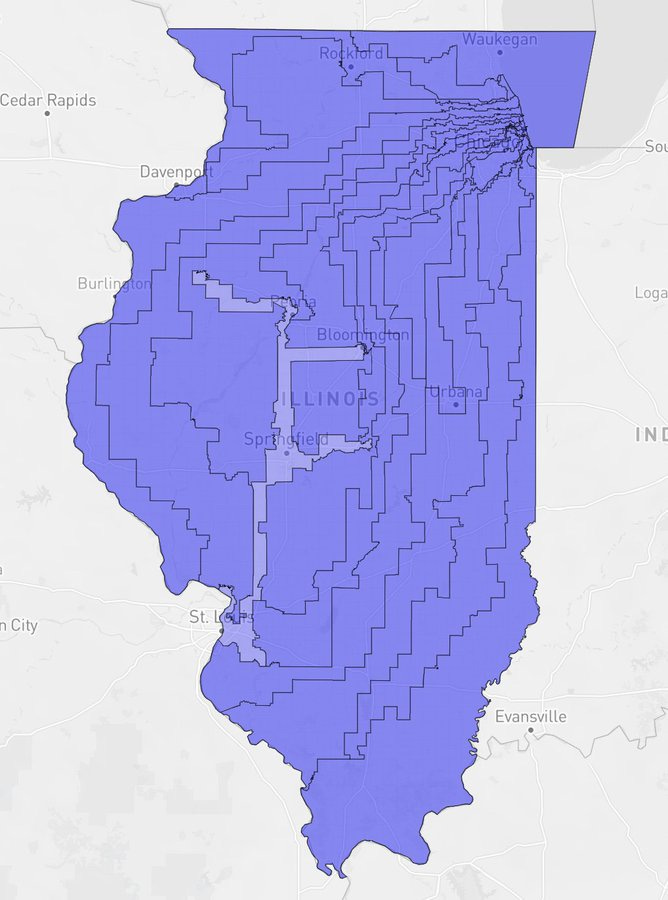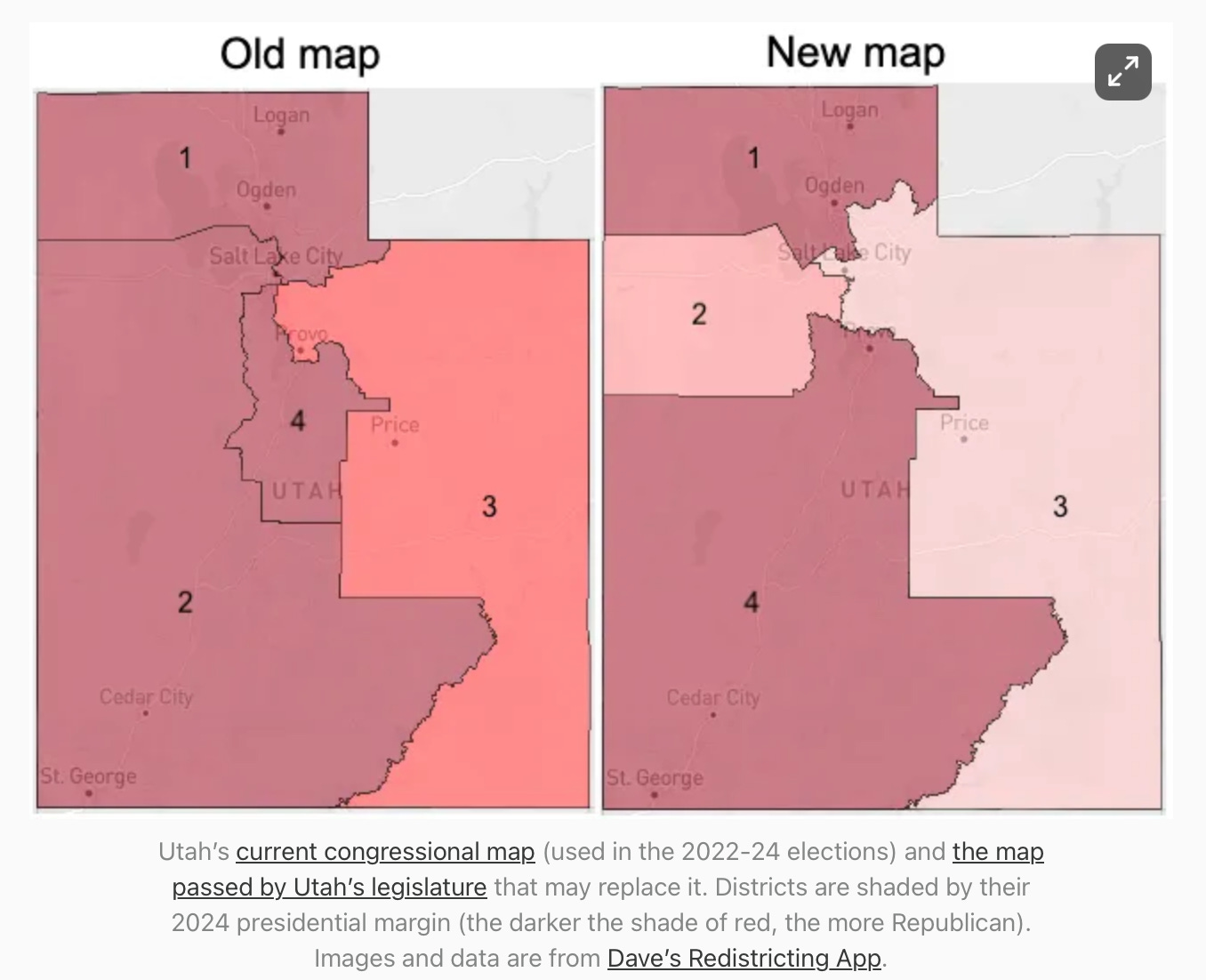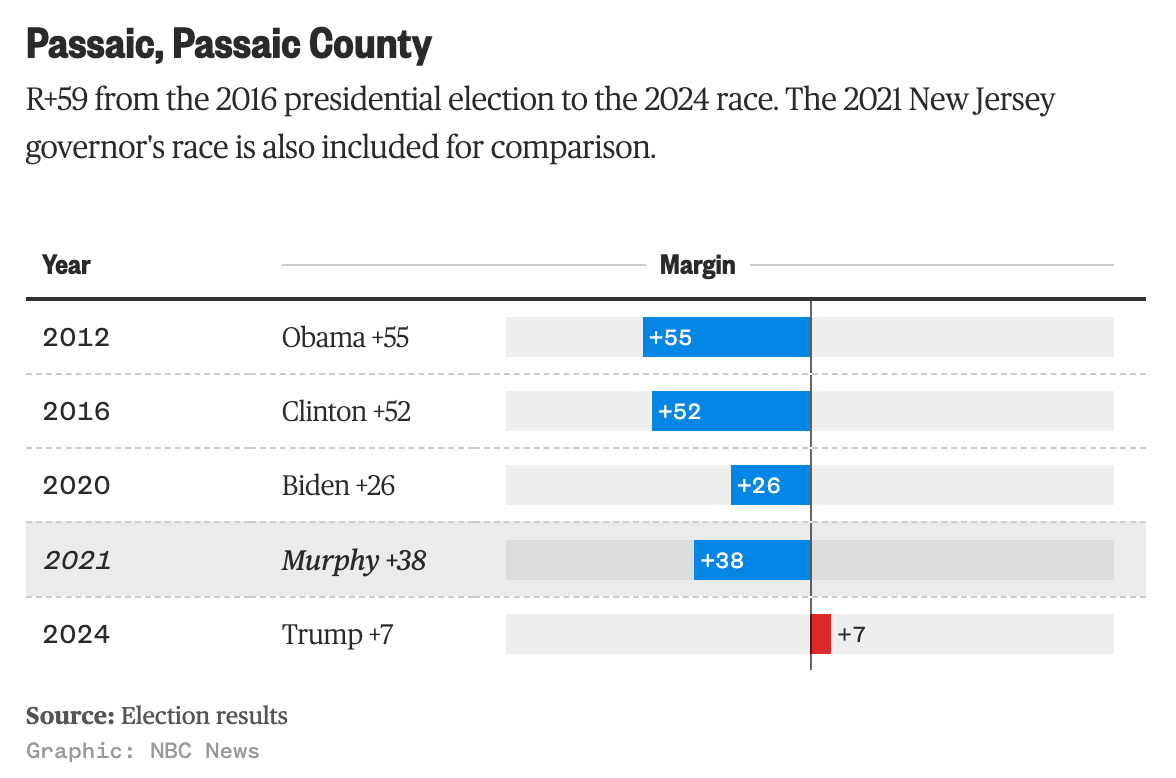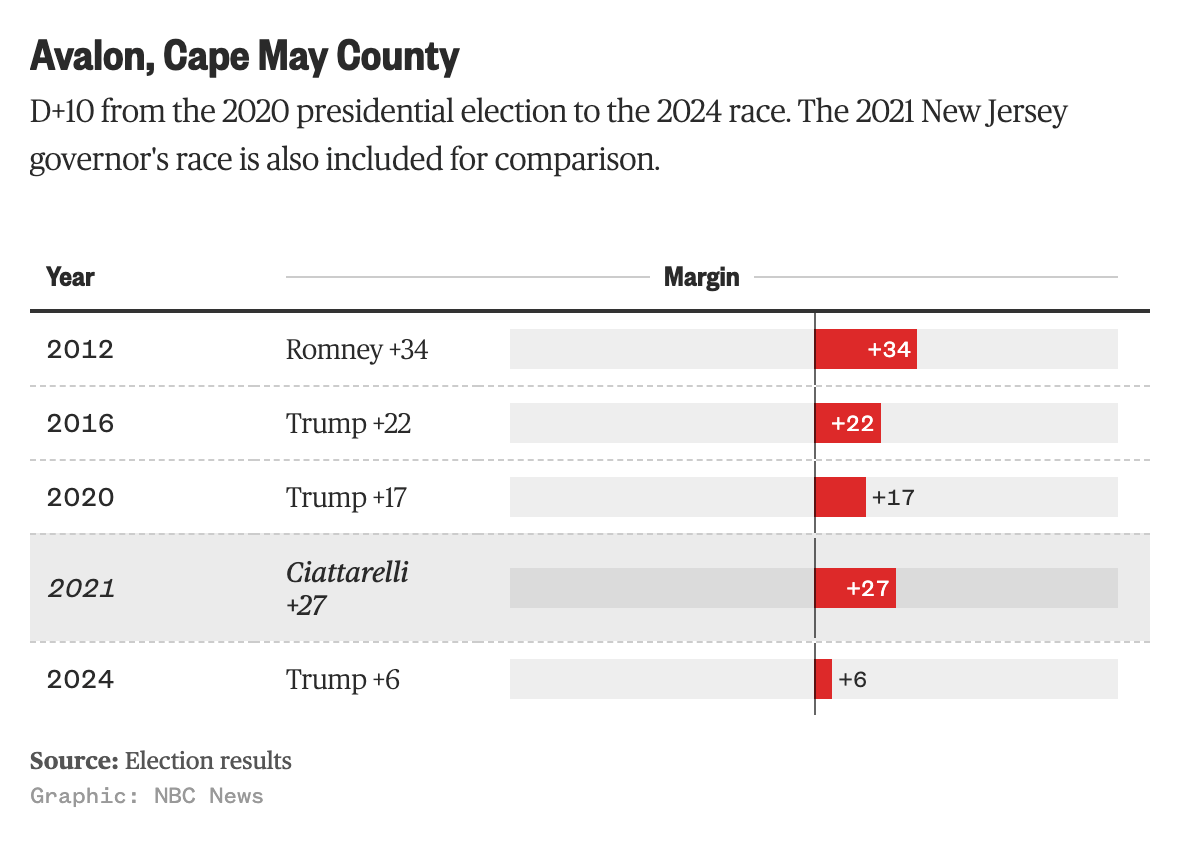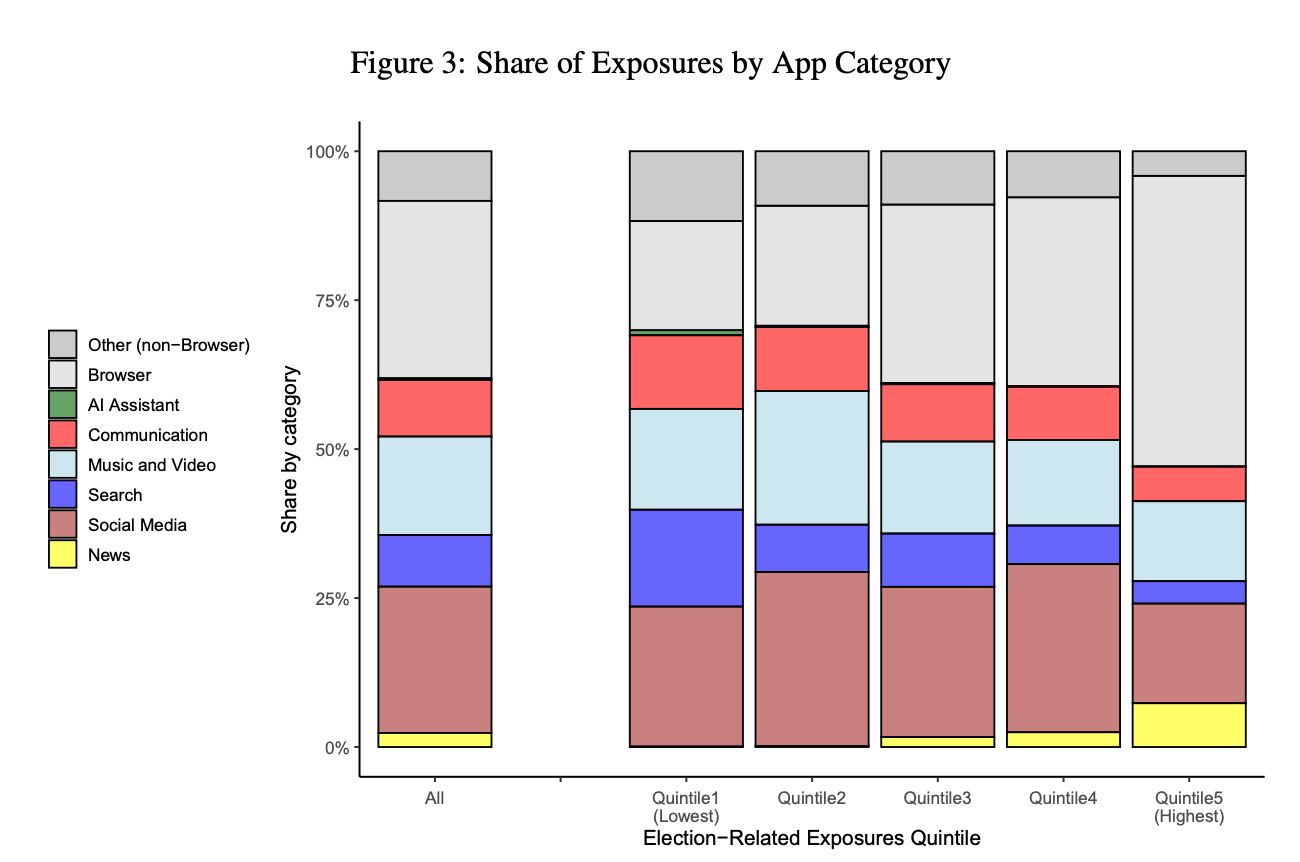The mother of all redistricting wars
How far the redraws can go, Hispanic cities vs. retiree towns in Jersey, 2024 voters spent 21 seconds a day on politics on their smartphones, AP VoteCast wins, religion drives the fertility divide
No. 378 | October 17th, 2025
🗺️ The mother of all redistricting wars
The Supreme Court this week held oral arguments in a case that could see the end of Section 2 of the Voting Rights Act. If that happens, this would open up a new and larger front in the re-redistricting wars, as Southern states district out heavily Democratic majority-minority seats.
Nate Cohn has a look at what a maximalist Republican map could look like in the region, netting up to a dozen Republican seats.
And this could well mean that Democrats would need to win the House popular vote by 5-6 points to have a chance at a majority.
Over at The Argument, Lakshya Jain and Leon Sit take a more measured view. These are their main points from their sharp piece:
District-level candidate quality (as measured by their WAR scores) likely shaves about half a point the margin Democrats would need for a majority.
VRA redraws would likely not be in place for the 2026 midterms — unless the Supreme Court rushes out a decision. Its major decisions for the term usually come in June, when primaries in many states have already happened.
Section 2 doesn’t just apply to southern states. Not needing to draw majority-minority seats outside the South could open the door to even more extreme Democratic gerrymanders in Illinois, California, and New York, among others. But this would not come close to offsetting the Republican advantage from redraws in the South.
Democrats could still win the House in a wave year — but it’s far less likely in presidential years.
Parochial political factors mean that parties “almost never go for the maximal gerrymanders drawn by laser-eyed teenagers on Election Twitter.” Truly extreme gerrymanders would require safe incumbents to run in competitive seats as they absorb big chunks of the other side’s territory.
Beyond the implications for control of the House, I’m interested in what this could mean for the nature of Congressional representation in America. The endgame we seem to be headed to is something like a unit rule for Congressional representation, with no members of the minority party in Congress in deep red or blue states. And oddly-shaped districts mean that districts can lose their regional identity, as in this laser-eyed Illinois redraw.
Functionally, Members of Congress would become something like at-large representatives of the entire state, rather than reflecting the priorities of people in a local area — the bedrock of representative democracy in America for almost 250 years.
Not only do maps like this potentially endanger certain incumbents, but they’re a logistical nightmare. Members don’t want to have to drive hundreds of miles clear across the state just to get to the other end of their district. If a seat did become competitive, candidates would have to buy TV time in several media markets as opposed to usually just one in a compact redistricting scenario. State legislators (who usually draw the maps) looking to move up to the House would have less of an advantage as their current seats are more likely to be split between multiple Congressional seats.
In some places, ending Section 2 could mean more compact maps. That includes parts of the Black Belt where it’s becoming progressively harder to draw a geographically cohesive majority-minority seat. These areas have been losing population, and along with a shift right among conservative blacks geographically compact seats in these areas would be competitive, along the lines of the current NC-1.
But in urban areas, it’s much harder to do without cracking urban areas — and forcing Republicans to take in much more Democratic territory that could make their seats far more competitive than they are today. We’ll see what the appetite is for this once redistricting decisions need to be made for Atlanta, Memphis, and New Orleans.
There are parts of the country where political geography favors Democrats, including large parts of the West. There, you’re less likely to have majority-minority urban districts you can pack all the Democrats into: it’s the Republican rurals that are far more lopsided than the Democratic urban areas. So you could well see two Democrats elected in ruby red Utah under the court-ordered redraw there:
Can Republicans extend their 2024 magic into 2025?
NBC News has a look at municipal election returns in red-trending New Jersey, where Democratic margins have eroded by as much as 68 points in heavily Hispanic, formerly industrial cities in north Jersey. The only areas with a clear Democratic trend since 2020 are retiree-heavy vacation towns, some with populations in the hundreds.
Polling right now suggests Republicans in both Virginia and New Jersey running at right around Trump 2024 levels — not as yet enough for a win. But should that be the result on Election Night, that should tamp down expectations of a Democratic wave.
Things look more uncertain on this front in California, where the two-party electorate looks to be 2 points more Democratic than at this point in 2024, according to the current numbers from this impressive AB/EV dashboard and my 2024 estimates.
2024 voters spent 21 seconds a day on politics on their smartphones
An impressive study surfaced by Jonathan Robinson analyzed real-time screen captures of smartphones to show that the median user spent 21 seconds on politics during the 2024 election, just 0.11 percent of overall smartphone usage. Celebrity content was more common than political content by a factor of 8. And even this low number may have been skewed by a small set of super-users. The average user spent 51 seconds viewing election-related terms, and the top 5% spent 3 minutes. The only major spike occurred on Election Day — after the results were announced, so this was not voters seeking out voting information. The primary sources of information were articles viewed in a web browser and social media, with AI and news apps rarely registering.
I had ChatGPT create a 2-page summary of this 77-page paper. Read it here.
AP VoteCast wins the exit poll battle
For the first time since 2016, all major broadcast networks will use the same exit poll, consolidating under the upstart AP VoteCast.
Edison Research, which was behind the “traditional” NEP exit poll, is being folded into SSRS.
Elsewhere…
Keep reading with a 7-day free trial
Subscribe to The Intersection to keep reading this post and get 7 days of free access to the full post archives.



